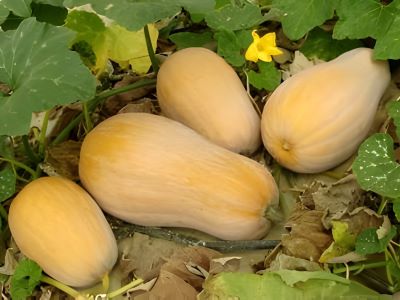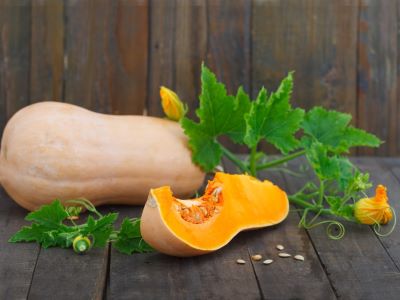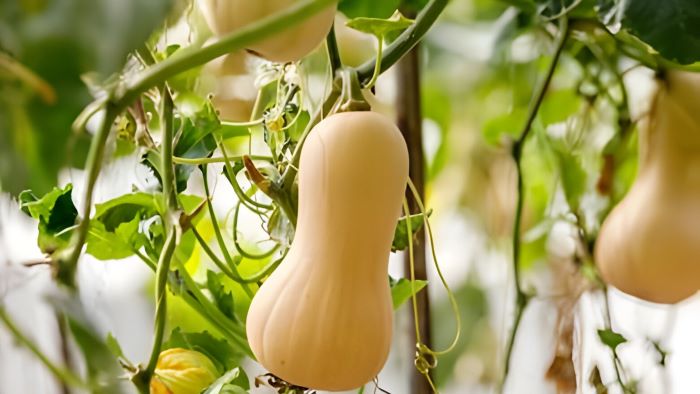Are you a proud gardener who loves to grow squash? If yes, then you must have noticed that the squash leaves turning yellow. Don’t worry, you are not alone.
Many gardeners experience this problem, and there can be several reasons behind it. To help you out, we have compiled a list of the causes of yellowing squash leaves and provided you with some solutions to fix the issue. We delve into the root causes of this common issue, from nutrient deficiencies to pest invasions. So, let’s explore the surprising factors that can lead to yellow squash leaves and how to tackle them.
Roll up your sleeves, grab your gardening gloves, and join us as we explore the secrets of keeping your squash leaves green and healthy!
Contents
6 Reasons Your Squash Leaves Turning Yellow!
1. Watering Routine
One of the biggest reasons squash leaves turn yellow is irregular watering schedules. Oh yes, too often or too much watering leads to this issue.
You need to be accurate with your watering schedule, especially when planting squash plants. This plant needs heavy water feeding, and if you fail to fulfill this requirement, you will have to face the consequences. Fluctuations in moisture levels can cause stress and damage to the leaves.

Furthermore, it has been observed, and even gardener experts recommend watering squash plants regularly. They should be nourished to two inches of their roots. During summer, you need to be extra careful; if the monsoon fails to meet the requirements, then extra water from your side needs to be given to your squash plant.
2. Your Squash Plant Needs Proper Nutrients
If you are planting squash plants in your garden, you need to remember to add nutrients. Yes, you heard it right. Squash plants crave nutrients like nitrogen, phosphorous, and potassium. Failing to feed your squash plant the proper nutrients can cause its leaves to turn yellow and weaken its roots.
To deal with this situation, you need to test your soil pH level and identify which nutrients are deficient. Accordingly, you can add appropriate fertilizer to the soil to give the squash plant robust growth.
3. Squash Leaves Turning Yellow Due to pest attack
Well, squash leaves turning yellow can be a sign of vine borers, whose larvae/eggs eat the plant’s stem and cause it to turn yellow and wilt. But you don’t need to worry; if you are planting tromboncino and butternut squash, then it’s less likely to be affected by the vine borers because they have denser stems.

Apart from vine borers, there are other pests that cause squash leaves to wilt and discolor them. For instance, aphids and spider mites, attack in large numbers, which eventually causes foliage to turn yellow and drop off from the plant.
4. Your Squash Is Diseased
Squash plants are likely to be influenced by various diseases, some of which lead to squash leaves turning yellow. Examples include Alternaria leaf bright, downy mildew, angular leaf spot, and aster yellows. If you notice any such fungal diseases, it would be better to add organic matter to the soil to restore the moisture of the plant’s roots.
5. Squash Plants Leaves Needs Adequate Sunlight
As we know, plants need sunlight to undergo the photosynthesis process. If they don’t get enough sunlight, they will become weak and stunted and may fail to produce flowers, vegetables, or fruits. Squash plants are a delightful addition to your home garden. They are also warm-season vegetables, and we can’t deny the fact that squash plants need adequate sunlight to thrive.

Furthermore, for optimal growth and vegetable production, squash plants need a minimum of 6-8 hours of direct sunlight each day. It has been observed that placing squash plants in a location where they receive full sun exposure for at least six hours is a good option.
Read: Zucchini Growing Tips: How to Grow Zucchini Plants? Ways to keep rabbits out of garden?
6. Signs of Natural Aging
Well, one of the reason behind your squash leaves turning yellow could be that they are aging naturally. Yes, and there is no need to worry about it. As we know, old leaves turn yellow and fall with time to make room for the new ones to thrive, while the rest of the newer foliage is green as usual.
However, you must worry when new leaves turn yellow and foilage becomes discolored in large quantities. This is a sign of a problem, and you need to take action rapidly to cure it and prevent your plant from being damaged.
What Is a Solution for Squash Leaves Turning Yellow?
Well, there is no guarantee that you can turn squash-yellow leaves into green. But you can correct your mistakes so that you don’t damage your vegetable plants and save them from turning yellow next time. As discussed above, we know why your squash leaves turn yellow. So, now you need to fix those mistakes and try to re-thrive your squash plant.

For your knowledge, we have jotted down some basic solutions, which you can use to correct your mistakes. Let’s get started:
- Squash plants need regular watering every week. If the weather has been extremely hot or dry, you may need to increase the quantity of water. An automatic irrigation system or hose timer can make the task simple. On the other hand, if the soil is too wet, your plant’s roots don’t receive much oxygen. In such a case, you need to cut down the watering frequency of your plants to prevent them from being damaged.
- If you observe your plant has been infested with pests, we recommend you immediately remove the damaged leaves to prevent other leaves from being infected. And spray chemicals to control pests.
- Like other plants, your squash plants need ample nitrogen to thrive. Nitrogen, phosphorous, and potassium can be easily found in fertilizers. So, if your soil lacks nitrogen, add it to give a boost to your plants.
Read More; Coral Cactus: The Care Guide!; Why Your Monstera Droopy? Reasons and Solutions! Keep cats out of garden!
FAQs
Can you reverse yellowing leaves on a plant?
Yellow leaves on a plant are often a sign of stress, and it’s generally not possible for them to turn green again. This is because they have lost their chlorophyll and are not able to convert into green even though you try to correct them. Common causes of yellowing leaves include poor watering and lighting, fertilizer problems, pests, disease, acclimatization, and temperature extremes.
Should I cut the yellow leaves of a squash plant?
Yes, you can cut the yellow leaves of a squash plant. Just make sure to remove only the yellow leaves, and do not cut the vines, as this will affect the plant’s roots.
How do you fix yellow squash leaves?
There are many ways to fix yellow squash leaf issues. One of the best solutions is to provide nitrogen to your squash plant. It acts like a protein for your plant and gives its roots fuel to thrive well. It is recommended to apply a nitrogen-rich, pH-balanced solution to restore your squash plant blossoms.
What does an overwatered squash plant look like?
Observing the signs is one way to identify whether your squash plant is overwatered. For example, it will develop yellow or brown limp, wet soil, and droopy leaves. On the other hand, little watering will lead to dry soil and brittle leaves.

Hello, I’m Rose Lehman, the content writer of cozynest. I have been a gardener for over 5 years, and I have a certificate in master gardening from the Oregon State University Extension Service. I enjoy writing about all aspects of gardening, from the basics to the advanced, and from the practical to the creative. I also love to explore different types of gardens, cultures, and styles, and share them with our readers. My goal is to inspire and inform our audience, and help them grow their own cozynest.

